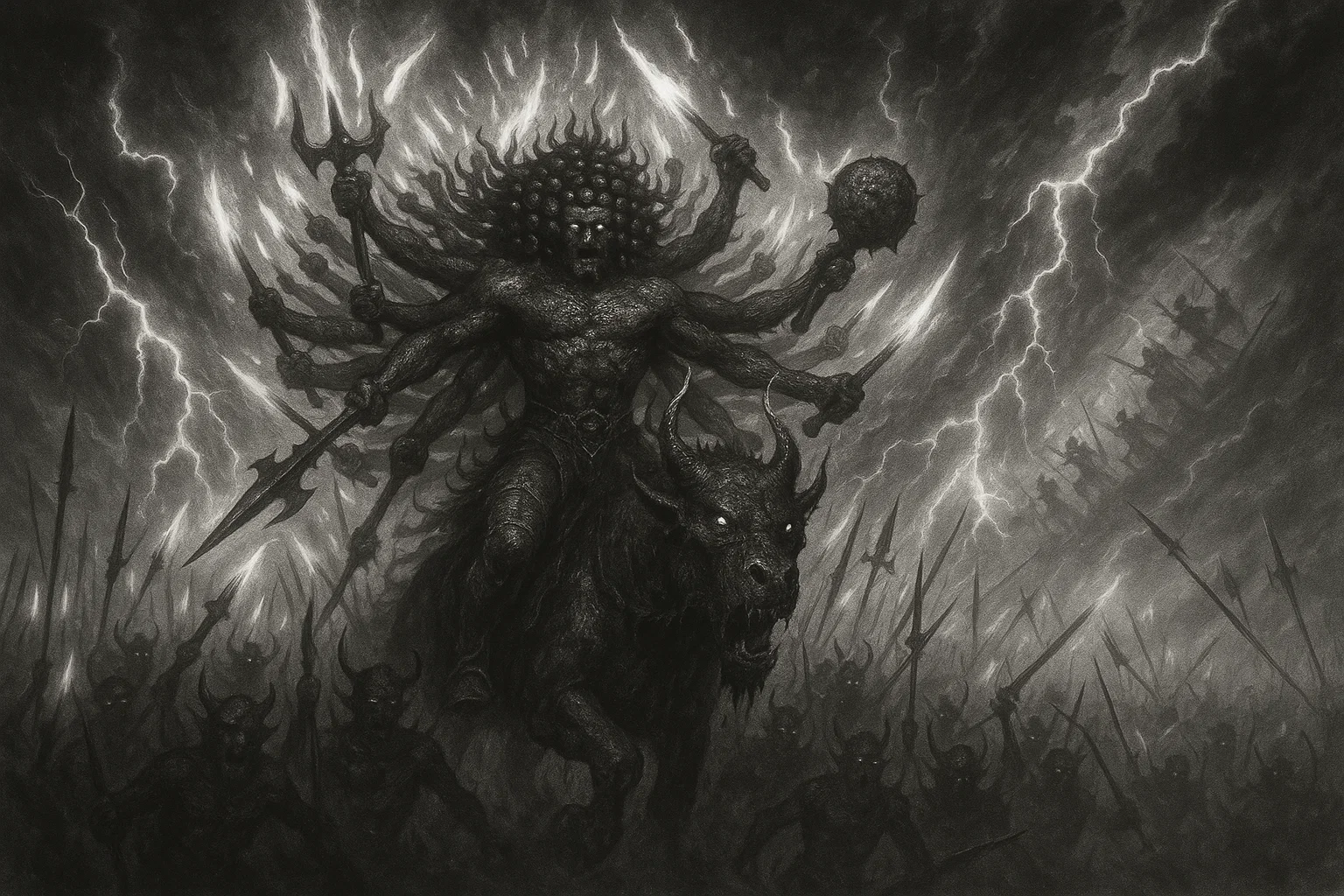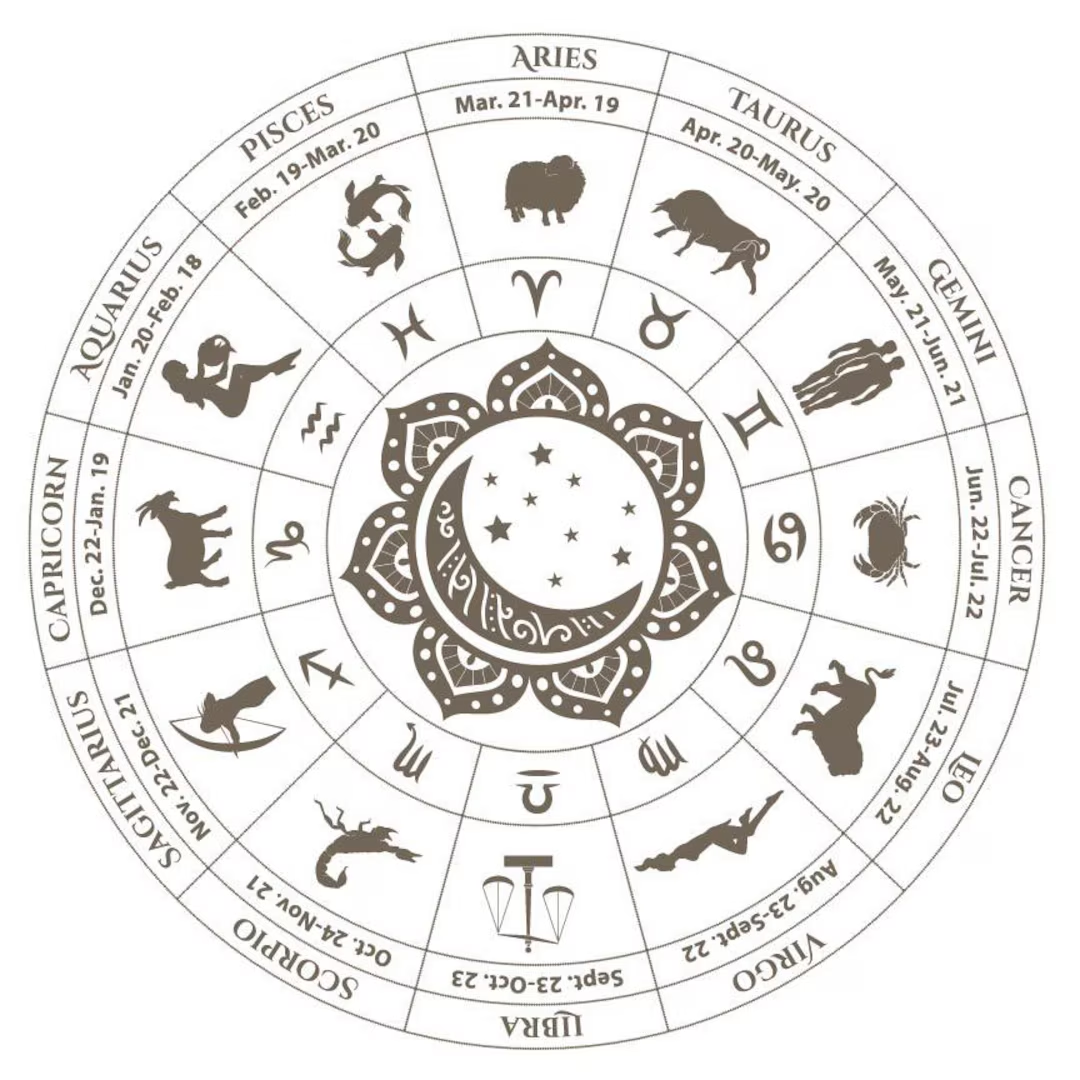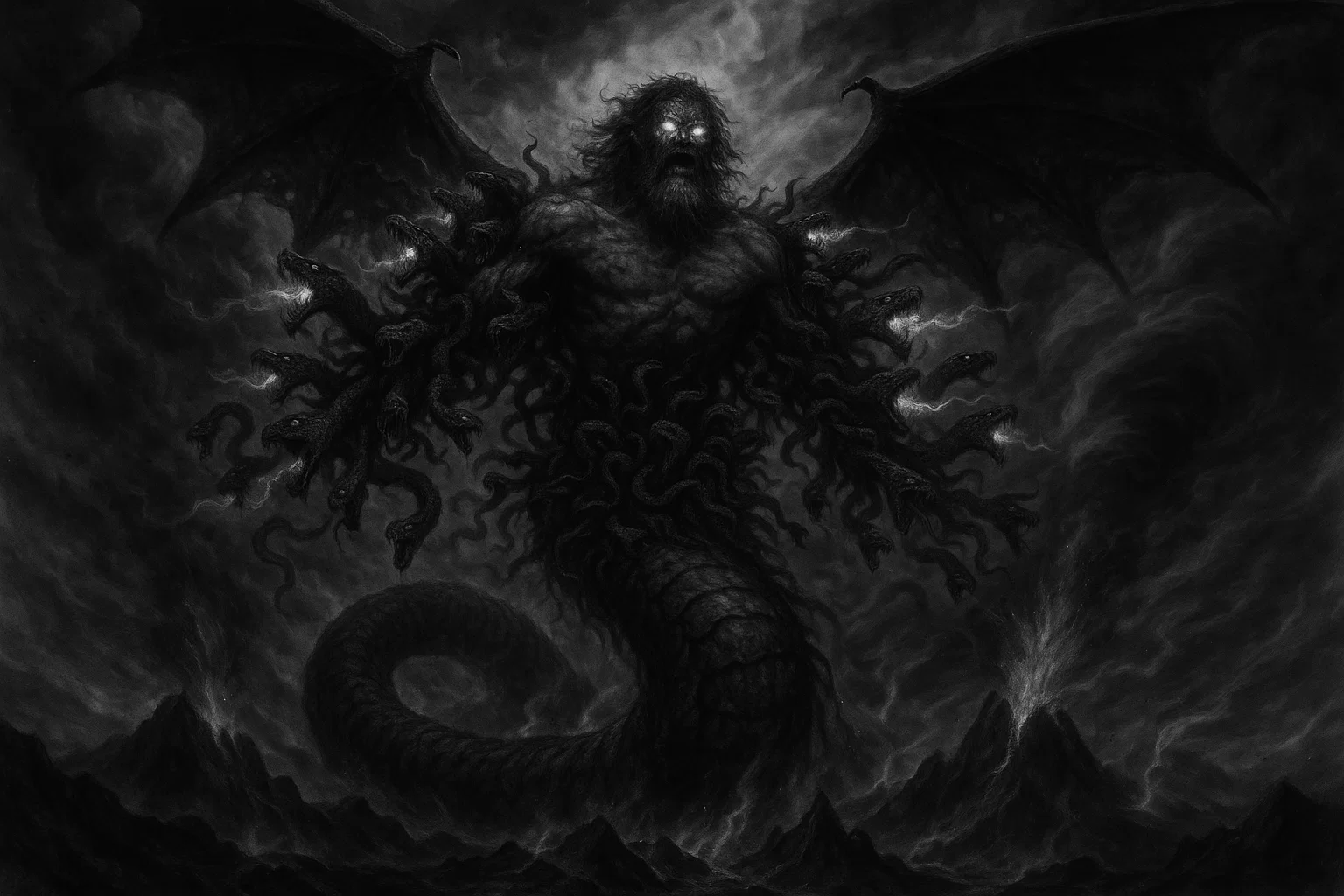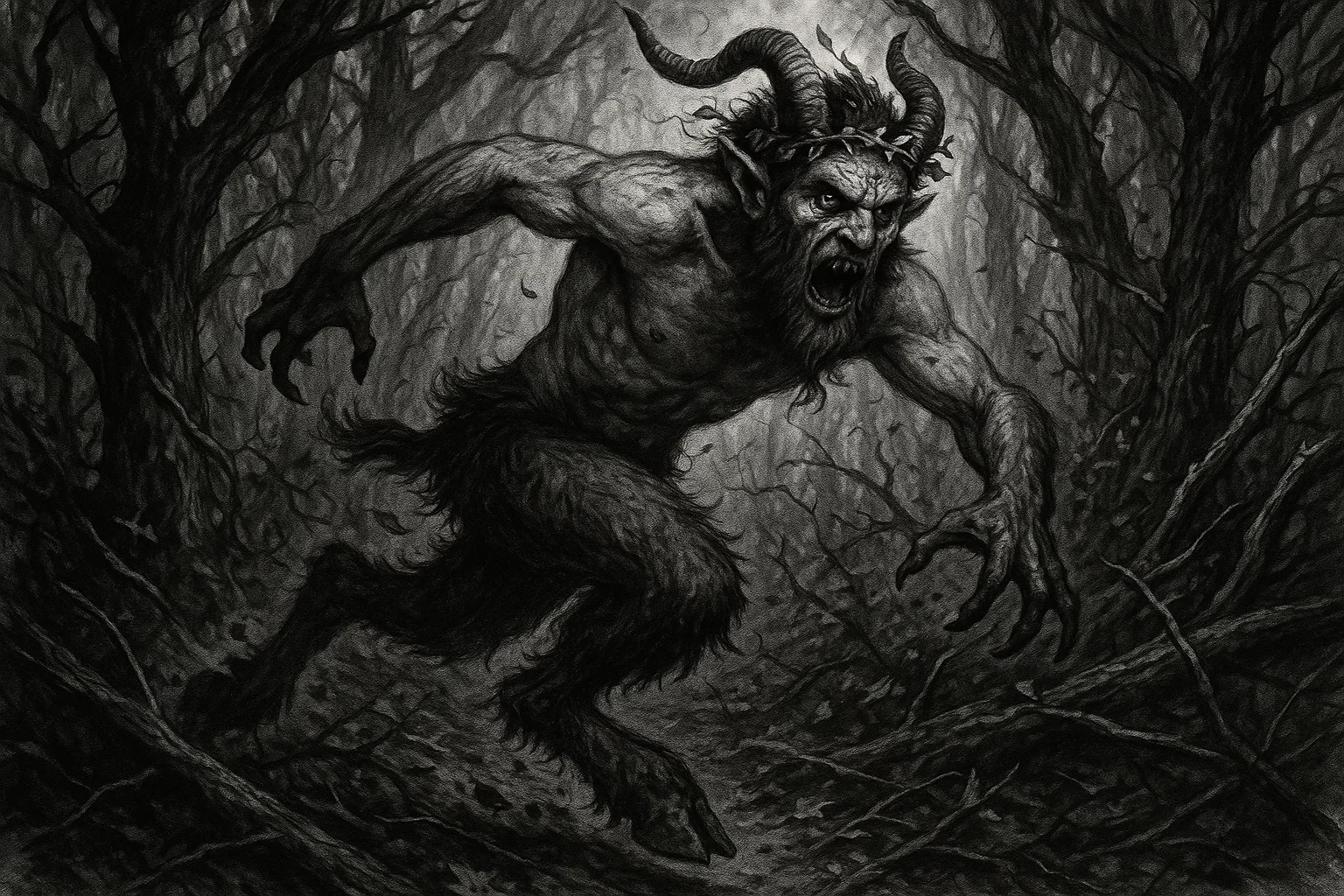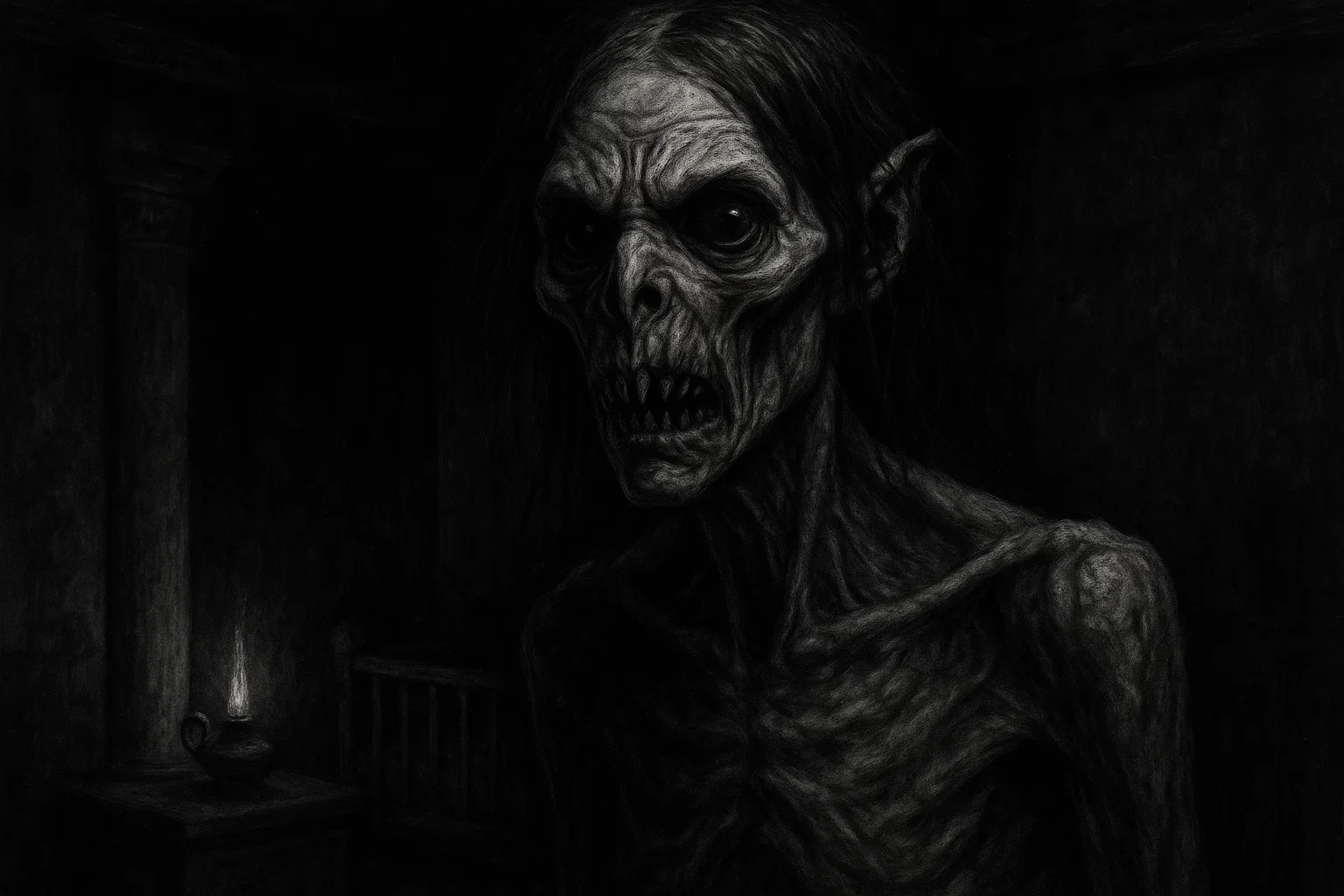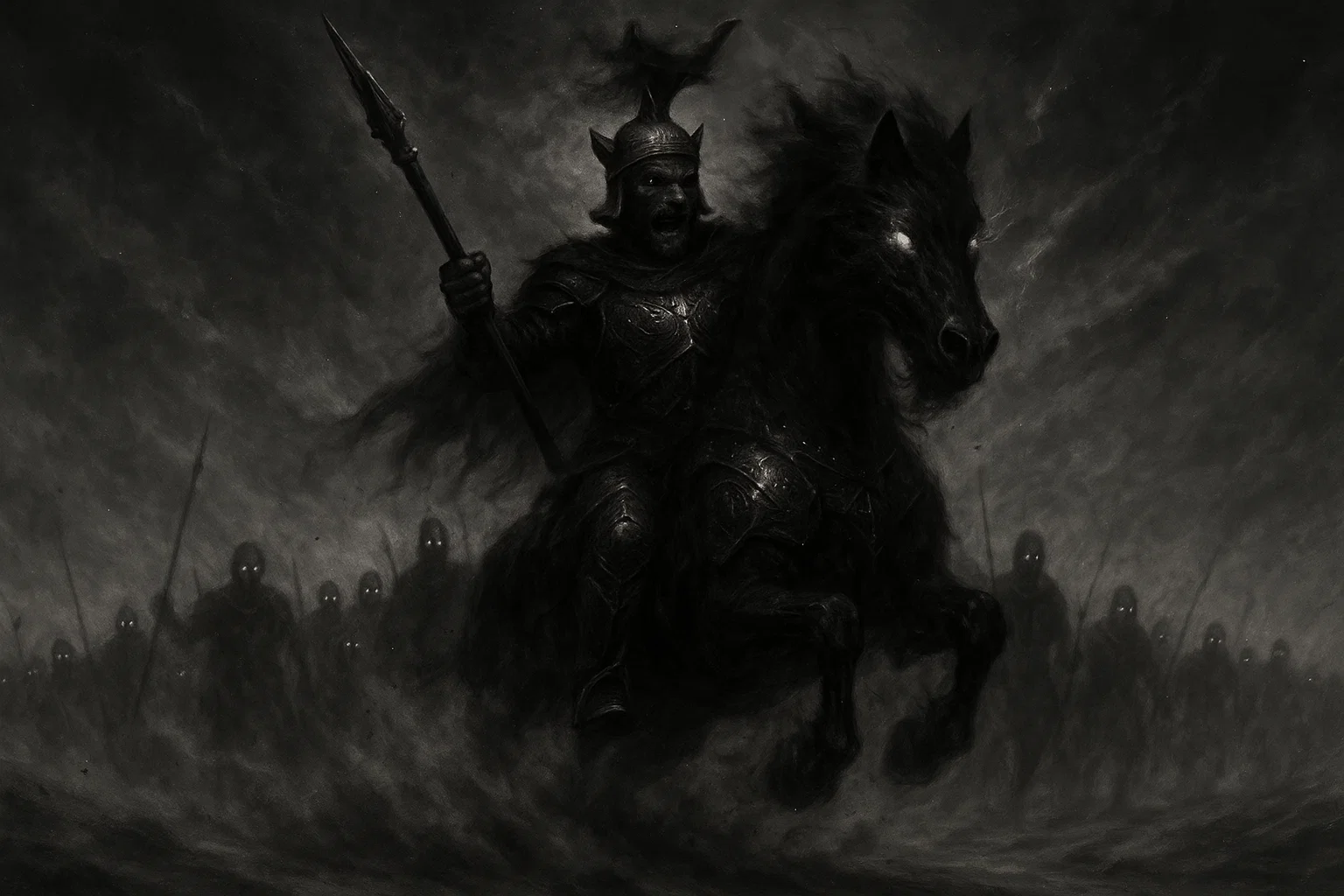Andhaka is a powerful Asura, or demonic entity, in Hindu mythology, often featured in narratives concerning the god Shiva and his consort Parvati. His name literally translates to “he who makes blind” or “blind one,” which is central to his identity and his most defining physical characteristic.
Andhaka is generally known for his great strength, his intense rivalry with Shiva, and his ambition to seize control of the heavens and earth, often culminating in epic battles. His story is primarily one of mistaken identity, intense tapas (ascetic practice), and ultimate conflict with the divine order.
Summary
Key Takeaways
| Attribute | Details |
| Name | Andhaka, Andhakasura |
| Title | Asura King |
| Gender | Male |
| Origin | Varies; often born from a drop of sweat from Shiva, or mistakenly born blind to Shiva and Parvati, or the son of Kashyapa and Diti (less common) |
| Appearance | Initially a blind, hideous figure with a thousand arms and heads; later sometimes depicted as a powerful asura with great strength |
| Hierarchy | King of the Asuras |
| Superior Demon | N/A; he is a powerful sovereign |
| Servitors | Various asuras and demonic armies |
| Associated Figures | Lord Shiva (father/opponent), Goddess Parvati (mother/opponent), Kashyapa, Diti, Sage Bhrigu |
| Powers | Immortality/invulnerability granted by boons from Brahma; immense physical strength; power to terrorize the three worlds |
| Weaknesses | Only vulnerable to a specific weapon or action (depending on the boon); often brought down by divine shakti (power) |
| Opposing Angel/Saint | Lord Shiva, Goddess Parvati (specifically in her fierce form, Kali or Durga) |
| Equipment/Tools | Various weapons typical of an asura warrior (e.g., mace, trident) |
| Pantheon | Hindu Mythology (Puranic tradition) |
| Notable Myths | The story of his birth and eventual battle with Shiva (primarily in the Vamana Purana and Matsya Purana) |
Etymology
The name Andhaka (Sanskrit: अन्धक) is directly derived from Sanskrit, and its meaning is central to the entity’s character and narrative. The term is a compound word: andhá (अन्ध), meaning “blind,” “dark,” or “blindness,” and the suffix ka (क), which can be diminutive or simply a nominalizing suffix. Therefore, Andhaka literally translates to “the blind one” or “he who is characterized by blindness.”
This etymological root is highly significant because Andhaka’s blindness is his defining trait in his origin story, particularly the one in which he is born from Shiva’s sweat or through a misunderstanding.
The physical blindness symbolizes a greater spiritual or intellectual blindness—the inability to see or recognize truth, Dharma (righteousness), or the divine power of Shiva. This spiritual darkness is what drives his Asura nature: his inability to acknowledge his true parentage and his lust for Parvati, which leads to his ultimate destruction.
In some Puranic accounts, he is also referred to as Andhakasura, where Asura denotes his demonic, anti-divine nature, establishing him as a king or powerful member of the demonic race.
Your Personalized, Hyper Accurate Moon & Astrology Reading
Limited time offer: Get your FREE, fully personalized Moon & Astrology Reading that takes astrology to a whole new level. Discover the secret depths of your personality, relationships, and true purpose in life.
What does the Demon Andhaka Looks Like?
Andhaka’s physical description varies across the Puranas, but his defining characteristic is blindness and a hideous appearance. In the Vamana Purana and Matsya Purana, which detail his primary myth, his birth is often described as grotesque.
When he is born from a drop of sweat on Shiva’s brow (as described in the Matsya Purana), he is said to have a vile, terrifying form. Specifically, he is often depicted with a hundred heads and a thousand arms, which is a feature that focuses on his immense, monstrous power and size.
His form is described as pitch-black and generally repulsive. The blindness, caused by the intense divine energy of Shiva’s third eye during his tapas, is permanent, justifying his name.
In later stages, particularly after performing intense asceticism (tapas), he receives a boon from Brahma, which restores his sight, granting him an appearance more akin to a powerful Asura king, albeit still formidable and fierce. His transformation, however, does not erase his history.
When he is fighting Shiva, some texts focus less on his initial monstrous traits and more on his sheer strength, immense size, and capacity to terrify, often leading vast armies of other demons.
After his final defeat and purification, he is sometimes depicted as restored to a normal form and given the position of a gana (attendant) of Shiva, such as Bhringi, indicating a complete physical and spiritual transformation from the repulsive, blind Asura.
You May Also Like: Pan: From Forest God to Christian Demon
Historical and Mythological Background
The primary narratives involving Andhaka are found within the Hindu Puranas, specifically the Vamana Purana and the Matsya Purana, which detail his birth, rise to power, and eventual conflict with Shiva.
Andhaka’s Birth and the Boon of Blindness in the Matsya Purana
In the Matsya Purana, Andhaka is born when Lord Shiva is meditating on Mount Mandara. As Parvati playfully covers Shiva’s eyes with her hands, the universe is plunged into darkness.
The immense heat and energy generated by Shiva’s concentration, combined with the darkness, cause a drop of sweat to form on Shiva’s forehead.
From this sweat drop, a dark, fearsome, and blind child appears. Shiva gives the child to the Asura Hiranyaksha, who was childless and desired a son. Hiranyaksha accepts the boy and names him Andhaka (the blind one). The child inherits the Asura nature.
The Pursuit of Parvati in the Vamana Purana
The Vamana Purana presents a different origin, though the story culminates similarly. In this version, Andhaka is the son of the Asura king Hiranyaksha.
After Hiranyaksha’s death, Andhaka ascends to the throne. He performs severe ascetic practices (tapas) to the god Brahma. Pleased by his devotion, Brahma appears and grants him a boon. Andhaka requests to be made invulnerable to all beings and for his blindness to be removed.
Brahma grants these boons but adds a condition: he will only die when he lusts after a woman who should not be desired, specifically a woman who is like a mother to him.
After receiving his new, sighted form and immense power, Andhaka becomes arrogant. He conquers the earth and invades the heavens, driving the gods (devas) out.
During his conquests, he learns of the beautiful goddess Parvati, unaware that she is his mother (or the consort of his true father, Shiva, depending on the lineage). Consumed by lust and ambition, Andhaka attempts to abduct Parvati from Mount Mandara.
The Great War and the Manifestation of Kali
Parvati first tries to dissuade Andhaka, explaining the sanctity of her marriage to Shiva. Still, the demon king is insistent and attacks the mountain. Shiva then appears to protect his consort. A massive, prolonged battle ensues between Lord Shiva and Andhaka, with the Asura army supporting Andhaka.
During the conflict, Shiva attempts to strike Andhaka. However, a major element of Andhaka’s power is revealed: from every drop of Andhaka’s blood that touches the ground, a new Andhaka springs up.
The battlefield becomes quickly overrun by thousands of identical, powerful demons. To combat this overwhelming multiplication, Shiva summons the Matrikas (Mother Goddesses), powerful shaktis who drink the demons’ blood before it hits the ground.
Still, the multiplication continues due to the sheer volume of blood. Recognizing the gravity of the situation, Shiva invokes the fierce and powerful goddess Kali (or Chamunda in some accounts), an emanation of Parvati’s fury.
Kali begins to drink the blood of Andhaka and his multiplying clones before a single drop can reach the earth. With his blood source contained, Shiva is finally able to strike the original Andhaka with his Trishula (trident), lifting him up on the spear point.
You May Also Like: Shax: The Deceptive Demon Marquis of Hell
Andhaka’s Redemption
Suspended on the trident for a long period, which is sometimes described as thousands of years, Andhaka’s Asura nature is slowly purified by the immense power and heat of Shiva’s weapon. His lust and arrogance are burned away, and he eventually realizes that Shiva is his true father and the ultimate reality.
Humbled and purified, Andhaka repents and sings a hymn of praise to Shiva. Shiva, pleased with his devotion, grants him forgiveness, restores him to his true form, and gives him a high position among his attendants (ganas), often under the name Bhringi or another respectable attendant of the divine couple.
Awaken XT is unlike anything you’ve ever tried before…
…it’s based off a closely guarded formula that’s said to be able to supercharge your pineal gland and help you access your untapped inner power. With it’s unique blend of extremely hard to source ingredients, Awaken XT helps support the healthy functioning of your pineal gland, as well as your other organs in your body.
Historical Mentions
Andhaka’s primary mentions are in the canonical texts of Hinduism, particularly the Puranas, ancient encyclopedic texts. His name, Andhaka, also appears in lists of powerful Asura.
| Text/Grimoire | Year (Approximate) | Description | Excerpt |
| Vamana Purana | 9th–11th Century CE | Details the asura’s birth as the son of Hiranyaksha, his tapas to Brahma, his boon, and his final confrontation with Shiva over Parvati. | “Hearing this, Andhaka, the son of Hiranyaksha, was elated, for he was now endowed with a great boon from Brahma; he was no longer blind, and was full of pride. Then, inflated with power, he sent his emissaries to seize Parvati from the mountain, the consort of Shiva.” |
| Matsya Purana | 3rd–6th Century CE | Describes Andhaka’s origin from the sweat of Shiva’s brow and his subsequent fosterage by Hiranyaksha. | “As Parvati covered the eyes of the great god Shiva, a great darkness enveloped the universe, and from the perspiration on the forehead of the Lord, a terrible, dark, and blind child was born, who was named Andhaka.” |
| Linga Purana | 5th–10th Century CE | Mentions his great power and the difficulty Shiva had in defeating him, necessitating the manifestation of the Matrikas. | “The fierce fight between Shiva and the demon Andhaka was tremendous, for every drop of the Asura’s blood that touched the ground instantly produced another Andhaka, filling the entire battlefield.” |
Andhaka’s Powers and Abilities
Andhaka’s powers primarily derive from the boons he earns through intense ascetic practice (tapas), making him one of the most formidable Asuras in Hindu mythology. His abilities are focused on physical domination and invulnerability, rather than mental manipulation or subtle temptation.
His specific powers include immense physical strength, capable of overpowering the devas (gods) and conquering all three worlds (Heaven, Earth, and the Netherworld).
The central and most critical of his powers is his conditional invulnerability, granted by Brahma: he cannot be killed by any standard means. He will only die if he lusts after a woman who is like a mother to him (Parvati). This boon makes him functionally immortal to all but a specific self-destructive act.
The most unique and challenging ability is his self-duplication power. From every drop of his blood that falls to the earth, a new, fully formed Andhaka is generated. This power turns any standard combat into an overwhelming, endless fight against an army that grows exponentially.
You May Also Like: Behemoth in Demonology: The Colossal Tempter
Powers and Abilities Breakdown
| Power/Ability | Description | Source | How It Tempts/Corrupts Humans |
| Conditional Immortality | Invulnerability to death from any source, except by lusting for a forbidden woman (Parvati). | Vamana Purana | Fosters boundless arrogance and a sense of impunity, leading to unchecked ambition and Adharma (unrighteousness). |
| Self-Duplication by Blood | Every drop of his blood that touches the ground immediately gives rise to a new Andhaka. | Matsya Purana, Linga Purana | Allows the demon to overwhelm any opposition, promoting the corrupt idea that physical force alone can defeat divine order. |
| Immeasurable Strength | Possesses colossal physical power, allowing him to conquer the heavens and earth. | Puranas | Represents the overwhelming power of ego and worldly ambition over spiritual insight and morality. |
How to Counter Andhaka’s Powers
Countering Andhaka’s powers required divine intervention and specialized tactics, focusing on neutralizing his unique invulnerability and self-duplication abilities.
The primary method Lord Shiva used to counter Andhaka was to exploit a loophole in his boon. The boon stated that Andhaka would only die if he desired a woman who was like a mother to him.
By attacking Shiva’s consort, Parvati (who was essentially his mother by virtue of his origin), he triggered his own destruction, allowing Shiva to deliver a fatal blow.
To counter his self-duplication power—where new Andhakas spring from his spilled blood—Shiva had to use the Shakti of the Great Goddess. The goddess Kali (or Chamunda) was manifested and instructed to drink every drop of Andhaka’s blood before it could touch the ground.
This decisive action successfully prevented the creation of new clones, neutralizing his invulnerability and isolating the original Andhaka for the final attack.
Thus, the counter involves not just physical force but the use of divine knowledge (exploiting the boon’s condition) and divine energy (the power of Kali).
For humans, this story implies that the powers of lust and ignorance (spiritual blindness) embodied by Andhaka are overcome only by recognizing the truth and applying divine Shakti (force or energy).
You May Also Like: Utukku: The Faceless Shadow Demon of Mesopotamia
Andhaka’s Role in the Hierarchy of Hell
Andhaka’s position is not within a typical Western “Hierarchy of Hell” but as a King (Raja) of the Asuras in Hindu cosmology. Asuras are a class of powerful, sometimes malevolent, anti-godly beings who lives in the netherworld (Patala) or other regions, constantly vying for control of the heavens (Svarga).
Andhaka is one of the most powerful Asura kings, a direct inheritor of the Dharma (duty/law) of his foster father, Hiranyaksha. He commands vast armies of lesser demons and creatures, making him a sovereign power equal to or greater than many of the secondary devas (gods). He is not subordinate to any other named demon; he is an independent, ruling entity.
His ultimate fate is unique in the Asura hierarchy. After his defeat and purification by Shiva, he is not consigned to a specific Hell. Still, he is redeemed and given a high rank among Shiva’s Ganas, the Lord’s divine attendants and semi-divine beings residing on Mount Kailash.
This transformation removes him from the Asura hierarchy entirely. It places him in a service role to the supreme deity, Lord Shiva, symbolizing that even the most powerful demonic forces can achieve salvation and transcendence through devotion and purification.
Astrological Associations and Symbolism
Andhaka, as a figure from Hindu Puranic mythology, does not have direct, systematic associations with Western astrological concepts (such as specific zodiac signs or planets) in the same way that Western demons might. However, his attributes link him to core Hindu and general occult concepts:
The concept of darkness/blindness is his main symbolic association. This is directly linked to the literal meaning of his name and his birth from a time of cosmic darkness:
- Element: Prithvi (Earth) or Tamas (Darkness). His Asura nature and focus on conquering the physical world associate him with Earth. At the same time, his blindness links him to the principle of Tamas, the quality of inertia, ignorance, and spiritual darkness.
- Color: Black (Kala), representing the darkness of his initial birth and his spiritual ignorance.
- Gem/Stone: Not explicitly assigned, but stones associated with darkness or shadow, or those that are meant to repel the malevolent effects of Adharma, might be relevant.
- Symbolism: He symbolizes spiritual blindness (Avidya), the lust for worldly power and forbidden desires (Kama), and the destructive power of uncontrolled Ego (Ahamkara).
| Association | Detail |
| Primary Concept | Tamas (Darkness/Ignorance) |
| Element | Prithvi (Earth) |
| Color | Black |
| Metal | Iron (Associated with war and asura weapons) |
| Governing Force | Kama (Lust) |
| Astrological Body | Rahu (The North Lunar Node, associated with shadowy, material desires) |
You May Also Like: What Is a Marid? The Demon That Defies Heaven
Andhaka’s Sigil
As a figure from ancient Hindu Puranic texts, Andhaka is not associated with a specific, formalized sigil (karmic or ritualistic seal) in the manner of demons in Western occult grimoires (such as the Ars Goetia). The Puranas focus on narrative and theological concepts rather than ritualistic demonology.
Instead of a sigil, Andhaka’s symbolism is represented by the images and weapons of his final, defining conflict with Shiva. The most potent symbolic item is the Trishula (Shiva’s trident), as it is the tool of his purification and eventual redemption, showing the conquering of spiritual darkness.
In ritual contexts focused on overcoming internal tamas or external demonic forces, the Trishula would serve as the potent counter-symbol to Andhaka’s chaos.
| Symbol/Item | Association/Meaning | Use in Rituals |
| Trishula (Trident) | Shiva’s weapon; symbolizes the destruction of the Triple Mala (ego, action, and illusion) | Meditation on purification; invoking Shiva’s protection against negative forces. |
| Blood (Rakta) | Source of his unending power and multiplication | Rituals focused on containment or control of life-force energy. |
| Mount Mandara | The setting of the confrontation; sacred mountain | As a site of meditation and seeking divine presence. |
Similar Demonic Entities
Andhaka’s role as an immensely powerful Asura who obtains boons and challenges the gods is a common archetype in Hindu mythology. Many other Asuras share similar characteristics, though their specific stories and relationships with the gods differ.
| Entity | Pantheon | Similarity to Andhaka | Key Difference |
| Mahisha | Hindu | Powerful Asura King; challenged the gods; defeated by a form of the Great Goddess (Durga). | Defeated by Durga rather than Shiva; his form is often that of a buffalo. |
| Hiranyakashipu | Hindu | Asura King who gained a near-immortality boon and tyrannized the world; destroyed by a specific avatar (Narasimha). | Focus is on his persecution of his son Prahlad; destroyed by Vishnu’s avatar, not Shiva. |
| Taraka | Hindu | Asura who obtained a boon that he could only be killed by the son of Shiva; conquered the world. | His main threat was the fear of his killer’s birth; defeated by Kartikeya (Skanda). |
| Vritra | Vedic/Hindu | A powerful asura/serpent/dragon who obstructed the waters/cosmos. | Focus is on elemental obstruction (water/rain); defeated by Indra. |
| Typhon | Greek | Monstrous offspring of Gaia who challenged the reign of the Olympian gods. | Focus is on chaotic, elemental power; defeated by Zeus, not redeemed. |
| Ahriman (Angra Mainyu) | Zoroastrian | The destructive, blinding spirit of darkness and chaos. | A cosmological force of evil, not a figure in a specific mythological narrative with a defined birth and death. |
| Fomorian Kings | Celtic | Early, monstrous, chaotic rulers who opposed the gods of the Tuatha Dé Danann. | Often associated with the sea and the wilderness; less focus on boons and redemption. |
| Jormungandr | Norse | Massive serpent whose existence ensures the coming of Ragnarok; an existential threat to the gods. | A monster of chaos, not a king who seeks to usurp power through cunning or boons. |
You May Also Like: Who Is Cimejes, the Twentieth Demon in the Ars Goetia?
Conclusion
Andhaka is a prominent Asura in Hindu Puranic mythology, primarily known for his epic confrontation with Lord Shiva and Goddess Parvati. His name, “the blind one,” originates from his birth from Shiva’s sweat and symbolizes the spiritual ignorance (avidya) that fuels his ambition and lust.
Through severe penance (tapas), he acquired immense power and conditional immortality, which he used to conquer the cosmos, ultimately leading him to challenge Shiva by desiring his consort, Parvati.
The story is a powerful illustration of divine justice and redemption. Andhaka’s defeat was not merely a battle of strength but a theological lesson on overcoming spiritual darkness. Shiva’s use of the Trishula to purify him and Kali’s action of consuming his blood neutralized his demonic powers.
Ultimately, his transformation into a dedicated attendant of Shiva highlights the Hindu belief in the potential for redemption and transcendence even for the most powerful enemies of the divine.

